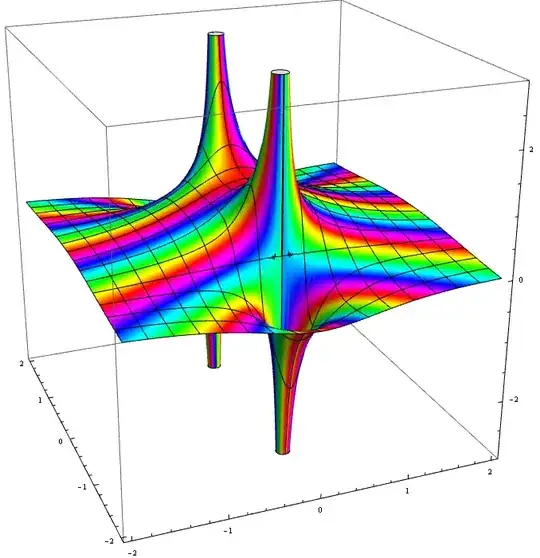Graphing the real part of complex function $\frac{1}{1+z^2}$ colored according to the imaginary part yields:
$$Re(\frac{1}{(1+z^2)})=\frac{1+x^2-y^2}{(1+x^2-y^2)^2+4x^2y^2}$$
$$Im(\frac{1}{(1+z^2)})=\frac{-2xyi}{(1+x^2-y^2)^2+4x^2y^2}$$

Slicing the graph of the real components with a plane rotated by $θ$ about the z-axis is possible as demonstrated by DanielFisher Here: "set $y=c⋅x$ where $c=tan(θ)$ and $θ$ is the angle between the vertical plane and the positive real axis. $y=c⋅x=tan(θ)$."
$$Re(\frac{1}{(1+z^2)})=\frac{1+x^2-y^2}{(1+x^2-y^2)^2+4x^2y^2}$$
replacing the y with $tan(\theta)\cdot x$:
$$\frac{1+x^2-(tan(\theta)*x)^2}{(1+x^2-(tan(\theta)*x)^2)^2+4x^2(tan(\theta)*x)^2}$$
Setting $\theta=45$ reduces to a nice clean Cartesian equation:
$$\frac{1+x^2-(tan(45)*x)^2}{(1+x^2-(tan(45)*x)^2)^2+4x^2(tan(45)*x)^2}=\frac{1}{4x^2+1}$$
This is a follow up question to that one:
How can the axis of rotation for the slicing plane be separated from the origin? How can the angle of the axis of rotation for the slicing plane be made skew relative to the z-axis?